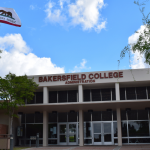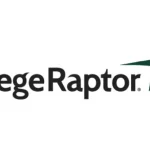AI technologies are impacting higher education in a number of ways: enabling institutions to automate routine tasks, providing 24/7/365 student support, driving enrollment, and improving engagement and student outcomes, all the while creating operational efficiencies that save staff time and money.
But a “set it and forget it” approach to AI won’t help your institution leverage these tools to their full potential when it comes to serving your students.
For AI to Succeed, it Must be Sustainable and Scalable
Using AI technologies successfully hinges not only on selecting the right tools, but also on developing an implementation and support strategy that is sustainable (and scalable) over the long-term. Student services professionals are pulled in many different directions under normal circumstances. Add in a global pandemic, and the last 18 months have you – and your team – stretched thinner than ever.
Over the next month, Ocelot will be sharing insights and best practices as part of a three-part blog series about how to build a strong foundation for your office’s AI tools and ensure they’re operating at peak performance for the students and families you serve.
This first blog highlights the value of creating an AI game plan that provides a seamless advising experience for students, breaks down silos between departments, stays ahead of the next big disruption and saves your team hundreds of hours.
Step 1: Assemble Your Subject Matter Experts
Students don’t think in silos and they won’t always instinctively know which department on your campus is best suited to answer their questions. This is especially true for prospective, first-generation, and under-resourced students who may not have someone they can turn to for help or guidance through various institutional processes. They may not even know what questions to ask, let alone the right place to ask them. Sending students from department to department to get the help they need is time consuming, frustrating, and creates barriers to enrollment and persistence.
AI technologies like chatbot and text campaigns can break down those silos on the front end with a virtual advisor who has the ability to answer questions across multiple functional areas without having to walk across campus or transfer a student to another office. Cross-departmental collaboration is crucial to breaking down these silos behind the scenes.
Including these types of helpful technologies as part of your institutional student services strategy will be most effective if the students you’re serving believe they are credible. To establish a uniform voice for your AI tools, one that students see as a reliable and trustworthy source of information and helpful guide, consider creating a cross-campus team of subject matter experts to manage your chatbot responses and text campaign templates. We’ve all encountered a frustrated student or parent who received incorrect information from a well-meaning colleague in another department. Using domains of expertise to delegate content management responsibilities ensures each team member carries a lighter load, protects against the addition of conflicting information to your knowledge base, and reduces duplication of efforts between offices.
Step 2: Decide Who Does What, and When
Once you have assembled your team of subject matter experts, customization is the fastest and most efficient way to get an AI “virtual assistant” up and running. Any quality AI partner will provide an out-of-the box knowledge base and templates that include the most common “Tier 1” student inquiries and outreach opportunities across the student services landscape. This will allow your institution to focus initial efforts on customizing existing content, which will enable you to maximize the benefit to your students right away.
Customizing chatbot and text campaign templates will go a long way towards making your institution’s AI-powered tools a popular source of readily-available information for students. You can make these tools even more powerful by continuing your cross-campus collaboration to create and maintain additional content that’s unique to your institution’s students and needs. Consider meeting regularly with your cross-functional group to discuss areas of opportunity, within and between your separate offices.
Are students frequently asking questions that aren’t addressed by existing content? Determine which functional area is responsible for that information and create custom questions and responses for your chatbot. Is there a point in an important process at which students historically struggle with the “handoff” between offices, or even within a single office? Create a text campaign to proactively nudge students about actionable items and next steps so they persist through their journey.
Step 3: Create a Calendar
So much in higher ed – pandemics notwithstanding – happens in predictable cycles. Application and billing deadlines, registration, term start and end dates, graduation, etc. Creating a calendar that takes repeating occurrences into account can be a huge time saver for your team when it comes to ensuring content is relevant and up-to-date, and will eliminate the need to make frenzied updates in the days or hours before an event. When the next major disruption happens – and it inevitably will – your team will be able to focus on helping students through it, instead of on making sure your communication infrastructure is up and running.
There are a number of blank calendar templates available through online software and word processing tools that can be leveraged to map out school dates and events that are important to your team’s work. Add those, and then working backwards, decide when to update associated chatbot responses and campaign templates accordingly. If you’re feeling ambitious, you can add communications outside of your AI tools as well: emails or letters to students, website updates, announcements, etc. Your content calendar provides a clear visual representation of your office’s year of student communications.
At a glance, you will be able to identify times of the year or events that are associated with a high volume of communications from your office. While it is important to use a variety of channels to reach students with the information they need to be successful, it’s also crucial to ensure those communications are timely, relevant, and provide a clear call to action. Send out too many overlapping communications with the same message at the same time and there is a high likelihood your audience will begin to ignore outreach from your office, no matter how important. Conversely, gaps in your content calendar can demonstrate the need and ideal scheduling for additional outreach campaigns.
The Wrap
A thoughtful communication plan is an essential component of your team’s overall strategy to serve students. You’ve got to have the right people. You’ve got to have the right processes. And most importantly, you’ve got to have the right tools. AI student engagement platforms, like Ocelot, present a tremendous opportunity to maximize the impact of existing staff, streamline cross-campus operations between departments, and ultimately improve access, equity, and engagement with students.















